Summary of April itinerary in Japan ( Kochi, Ehime )
I traveled to Kochi and Ehime prefectures from April 18th (Monday) to April 21st (Thursday). On this trip, I was able to eat a lot of seasonal seafood such as first bonito of season and local dishes such as Uwajima Tai-meshi. In addition, I was able to visit many wonderful tourist destinations such as national treasures, national important cultural properties, and national Important Preservation Districts for Groups of Traditional Buildings. This is the April Japan itinerary that I highly recommend to everyone. Here is a summary of this trip and some notes.
As I repeat every time, this itinerary was also created with the purpose of “eating out seasonal fish and shellfish and local dishes.” Food is the highest priority, and tourist destinations are the second priority. However, I aimed to visit as many tourist spots as possible, such as national treasures, national important cultural properties , and national Important Preservation Districts for Groups of Traditional Buildings.
Table of contents
1.”100 best of local dishes” and “Local dishes loved by the nation” by this itinerary in Japan
2. Seasonal “PRIDE FISH” by this itinerary in Japan
3. Travel precautions for itinerary in Japan
1.”100 best of local dishes” and “Local dishes loved by the nation” by this itinerary in Japan
Kochi Prefecture : Katsuo no tataki (lightly roasted bonito)
I enjoyed “Katsuo no tataki” with lunch at Tosa-Kure on the first day of the trip and dinner at Shimanto city in Kochi prefecture. Tosa-Kure is also famous as a fishing port for bonito. I enjoyed the “Katsuo no tataki” and “bonito sashimi” that I thought were the most delicious in my life. As shown below, Japan Fisheries Co-operative has selected “Tosa Saga no Himodori Bonito (Bonito with outstanding freshness caught by Tosa Saga)” (season: March-May) as the “PRIDE FISH” in the spring of Kochi Prefecture. Kochi Prefecture has the 4th largest catch of bonito in Japan, but the 1st largest consumption in Japan.
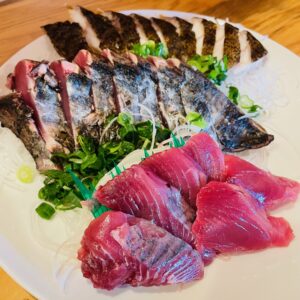

Ehime Prefecture : Uwajima Tai-meshi, Jakoten
In Ehime prefecture, I was able to eat “Uwajima Tai-meshi” three times and “Jakoten” twice.
I ate “Uwajima Tai-meshi” twice in Uwajima City and once at Matsuyama Airport. I love the delicious “Uwajima Tai-meshi”, which is a simple dish of fresh red sea bream sashimi and raw eggs on top of rice.
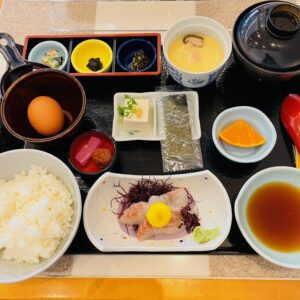
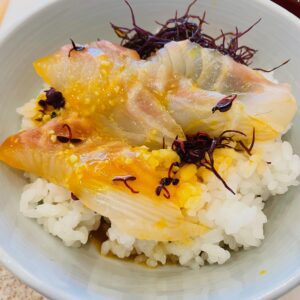


I had “Jakoten” once in Uwajima City and once at Matsuyama Airport. In particular, the thick Jakoten that we ate in Uwajima City, “Oni Jakoten,” was a gem that we could enjoy the taste of Jakoten. The freshly fried “Kureten” that I ate in Kure, Kochi Prefecture is also “Jakoten”. “Kureten” was also the most delicious.


In both Kochi and Ehime prefectures, no dish was selected as a “Local dishes loved by the nation” selected by the Ministry of Agriculture, Forestry and Fisheries. I have eaten some local dishes, so I would like to introduce them.
Kochi Prefecture: Tataki of moray eel (lightly roasted moray eel), natural eel of Shimanto River, “Gori (young Dusky tripletooth goby)” of Shimanto River
“Tataki of moray eel” is a specialty of Kochi prefecture. Areas that use moray eels as ingredients are mainly limited to some areas such as Shikoku and Wakayama prefecture. Moray eels have thick skins and small bones, which makes it difficult to cook, which is why they are difficult to use in other areas. However, the taste is delicious. “Tataki of moray eel” is a cooking method that can be eaten mainly in Kochi prefecture. I had “Tataki of moray eel” at Tosa-Kure.
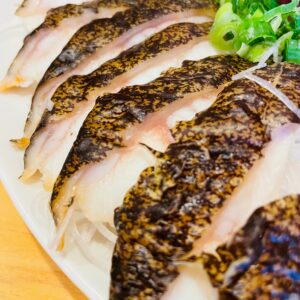
“Natural eel of the Shimanto River” is very valuable because it is the natural eel of the Shimanto River, which is called “the last clear stream in Japan”. Natural eel account for only 0.4% of the eels caught in Japan (2020). Natural eel were very thick and chewy. It is completely different from cultured eel. However, since it is a natural river fish, it had a slight odor. I thought that if the taste was important, it would be cultured eel, and if the chewy texture was important, it would be natural eel. Natural eel is said to be the most delicious in the summer when it gets fat.
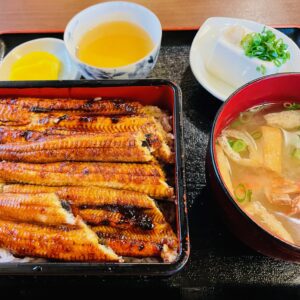
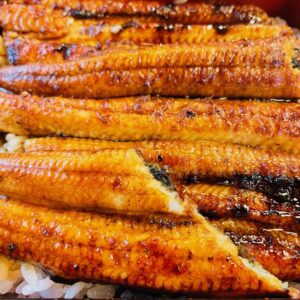
“Gori” is a young Dusky tripletooth goby, a member of the goby. The fishing season for “Gori” is from February to April, so I was able to eat “fried Gori” just in season. It was a delicious fried Gori that was small and easy to eat. “fried Gori” tasted good with both beer and sake.

Ehime Prefecture : Satsuma-meshi, Tai-somen, Fuka no Yuzarashi, Fukumen, Tachiuomaki (Hairtail bamboo roll), Mitsuhama-yaki
In Ehime prefecture, I was able to eat a lot of local dishes by going to the local cuisine “Hozumitei” twice in Uwajima city. “Satsuma rice”, “Tai-somen”, “Fuka no Yuzarashi”, “Fukumen”, and “Tachiuomaki (Hairtail bamboo roll)” are introduced by the Ministry of Agriculture, Forestry and Fisheries as “Our Regional Cuisines” in Ehime prefecture.
“Satsuma” means that the husband helps his wife to cook, or that the simple cooking helps his wife’s cooking. “Satsuma-meshi” is a local dish of barley miso, soup stock, and roasted fish mixed in a earthenware mortar and sprinkled over rice or barley rice. “Satsuma-meshi” was a delicious dish that seemed to be addictive, contrary to its plain appearance. Whenever I visit Uwajima again, I definitely want to eat “Satsuma-meshi”.

“Tai (red sea bream) somen” is a small-sized red sea bream that is boiled in its entirety and served on a platter with somen noodles. In the Nanyo region, it is eaten with garnish such as thin omelette cut into strips and shredded shiitake mushrooms. It seems that five-colored somen noodles are often used in the Matsuyama area. In Uwajima City, it is customary to eat “Tai-somen” along with “Fukumen” at a celebration. The “Tai-somen” I ate in Uwajima was very delicious. I had warm “Tai-somen” in Matsuyama city.


“Fuka” of “Fuka no Yuzarashi” is a shark. Sharks around 1 meter are often caught in Nanyo. People in Nanyo eat “Fuka” with vinegar miso, because “Fuka” has a light taste. It felt a little watery to me, and I couldn’t get the impression of other local dishes from “Fuka no Yuzarashi”.

“Fukumen” is also a local dish of Uwajima. “Fukumen” is made by laying boiled flaked fish, pink soboro (powdered fish), green onions, etc. on the konjac noodles. It is eaten as a celebrative dish for festivals, New Year, wedding receptions and longevity celebrations. “Fukumen” had a rather simple taste, unlike the gorgeous appearance.

“Tachiuomaki (Hairtail bamboo roll)” is also a local dish of Uwajima. “Kawai Tachiuomaki” invented “Hairtail bamboo roll” in 1987 in Yoshida Town, Uwajima City. The “Hairtail bamboo roll” of “Hozumi-tei” is wrapped tightly around the bamboo, so I felt it was a little hard. Someday I would like to eat freshly baked at “Kawai Tachiuomaki”.

“Mitsuhama-yaki” is an okonomiyaki that is eaten around the former Mitsuhama-cho in the western part of Matsuyama city. Mitsuhama’s comfort food. In the Taisho era, wheat flour melted in water was baked, green onions were put on it, and the sauce was sprinkled on it. This “Issen Yoshoku (Cheap western food)” is said to be the origin of “Mitsuhama-yaki”. Unlike Hiroshima-style okonomiyaki, “Mitsuhama-yaki” is folded in half. The “Original Mitsuhama Yaki” of “Yakiyaki Iron Plate Grill Himawari” was as delicious as the popular store “Micchan Sohonten” in Hiroshima.

2. Seasonal “PRIDE FISH” by this itinerary in Japan
Kochi Prefecture : “Tosa Saga no Himodori Bonito (Bonito with outstanding freshness caught by Tosa Saga)” (season: March-May), Mackerel in Tosa-shimizu (season: October-February), Kochi Haruno’s “Dorome” (season: September-December)
As mentioned above, I could eat “Tosa Saga no Himodori Bonito (Bonito with outstanding freshness caught by Tosa Saga)” as “Katsuo no tataki (lightly roasted bonito)”.
I could eat Mackerel in Tosa-shimizu as a sashimi arranged in its original shape in Shimanto City. Off the coast of Ashizuri-misaki in Tosa-shimizu City, Kochi Prefecture, the tidal current is fast and the food is abundant, so tight-fitting mackerel is caught all year round. Because each fish is fished one by one, it is landed in the best condition without damaging the net. It was a little past the season, but it was a very delicious and moving mackerel sashimi. It was one of the best mackerel in my life.

I had Kochi Haruno’s “Dorome” (season: September-December) in Kochi City. Raw whitebait (fry of anchovy) is called “drome” in Kochi prefecture. “Dorome” is landed at the Haruno Fishing Port located at the western end of Kochi City. The fishing grounds are from the lower Niyodo River to the coast of Katsurahama. In “PRIDE FISH”, the season is autumn, but the fishing season is spring and autumn. It may not be the best season this time, but since it is spring in the fishing season, I was able to eat fresh and delicious dorome.
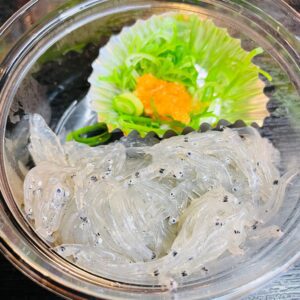
Ehime Prefecture : Ehime Prefecture: Aiiku Fish Aidai (red sea bream) (season: February-May), Biyabiya Bonito (season: April-June), Fishing Hairtail (season: August-October), Common octopus off the coat of Matsuyama (season: June-September), Akou (Red-spotted grouper) in the Kurushima Strait (Season: July-September)
“Aidai” is a farmed red sea bream that is cultivated under strict management standards in the Uwa Sea (Uwajima), which is a rich fishing ground where the ria coast and the Kuroshio (black current). Ehime Prefecture has the 4th largest catch of natural red sea bream in Japan (1st is Fukuoka Prefecture), but the catch share of cultured red sea bream is 47%, which is overwhelmingly 1st (2nd is Kumamoto Prefecture with 12% share). The Ehime prefecture has a catch share of 56%, which is the sum of natural red sea bream and cultured red sea bream. I ate red sea bream not only as “Uwajima Tai-meshi” but also as a sashimi platter.
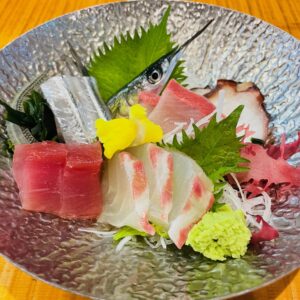

“Biyabiya bonito” is a fresh bonito caught at Fukaura fishing port. “Biyabiya” is a dialect of Ainan Town where the Fukaura fishing port is located, and means “very fresh and elastic”. “Biyabiya bonito” is drained blood from a live fish on board immediately after fishing. Also, to maximize the freshness, fishermen land the fish the same day they catch it. I was able to eat the bonito caught at the Fukaura fishing port in Uwajima City as “Katsuo no tataki (lightly roasted bonito)”.

Fishing Hairtail, Common octopus off the coat of Matsuyama, Akou (Red-spotted grouper) in the Kurushima Strait are all out of season in April. However, I was able to eat them as “Tachiuomaki (Hairtail bamboo roll)” and a platter of sashimi.
“PRIDE FISH” is selected by Japan Fisheries Co-operative.
3. Travel precautions (local trains) for itinerary in Japan
I write the same thing every time, but it’s important, so I repeat it. This time as well, the rule of travel is an environment-friendly trip that uses only public transportation including rental bicycles. This time, it was a trip with a lot of rental bicycles, such as running 42km from the downstream to the upstream of the Shimanto River.
Again, this is a reconfirmation, but traveling by public transport has far less CO2 emissions than traveling by car. For example, according to data from the Ministry of Land, Infrastructure, Transport and Tourism, CO2 emissions when one person travels 1 km are 130 g for automobiles, 98 g for aircraft (75% for automobiles), 57 g for buses (44% for automobiles), and 17 g for railways (13% for automobiles).
It was difficult to understand how to get on and off the one-man operated train this time as well. The “JR Yodo Line” (I boarded from Ekawasaki Station to Uwajima Station) and the “JR Uchiko Line” (I boarded from Iyo-Ozu Station to Uchiko Station) were one-man operated trains.
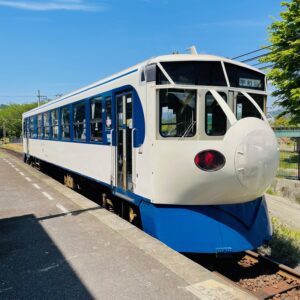

When getting on and off a one-man operated train, you need to press a button to open the door. Also, when you get on the train, you will get a numbered ticket, and when you get off, you will put the numbered ticket and money in the fare box and get off.
There was a note on the boarding gate about how to get on and off, and a poster was posted inside the train, but it was only in Japanese. Railroad operators and tourist associations should be responsible for providing guidance in foreign languages.

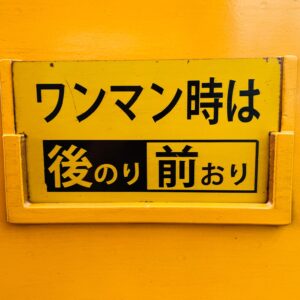
In the case of a one-man operated train, it is safe to always get on the first car. In JR, you usually get on from the rear door of the first car and get off from the front door. Be sure to remember the train boarding / alighting rules when traveling in rural areas of Japan. However, it depends on the railway operator whether you ride from the front door or the rear door of the first car.
Please see the detailed notes written on each travel day.
4. Travel in a light style
Again, I sent my clothes and power cord to my accommodation in advance for this trip, and enjoyed the “luggage-free trip” every day. After all, it is very easy to travel in a light style like taking a walk. Being able to act immediately after arriving by train or plane is important for effective use of time. Especially this time, the flight arrived at Kochi Ryoma Airport late, and the scheduled departure time of the limousine bus was at the very limit of the departure time. Perhaps the person who left the luggage on the plane couldn’t get on the bus.
Also, like the last day of this trip, it is difficult to carry a carry bag with an umbrella when it rains. The rain also gets the carry bag wet. I want you to travel without luggage when the weather is unseasonable, such as spring. Again, on the last day of the trip, I sent the clothes I wore during the trip to the laundry agent and did not have to do the laundry. I want everyone to experience the comfort of a “luggage-free trip”.
5. April 18 (Monday) Day 1
I traveled to Kochi and Ehime prefectures from April 18th (Monday) for 3 nights and 4 days. This time as well, I sent my luggage to my travel destination and enjoyed the “Luggage-free trip”.
On the way from Kochi Station to “Hirome Market”, there is Kochi Prefectural Kochi Otemae High School. It is a historic school which is opened in 1878 as “Kochi Junior High School”. The clock tower of Kochi Prefectural Kochi Pursuit High School is impressive.
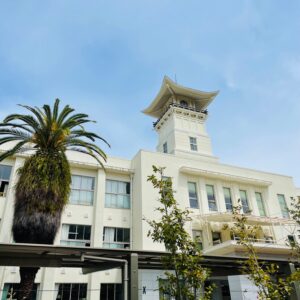
The graduates of this school include many celebrities such as the 27th Prime Minister Hamaguchi Osachi, who was called the “Lion Minister,” and Takashi Yanase, the cartoonist of “Anpanman.”
Since Takashi Yanase was raised in Kochi Prefecture, JR Shikoku has been operating the “Anpanman Train” since October 2000. When I took the limited express to Tosa-Kure Station, the “Anpanman Train” was stopped at Kochi Station.
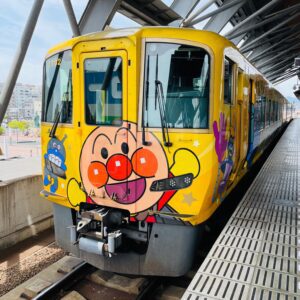
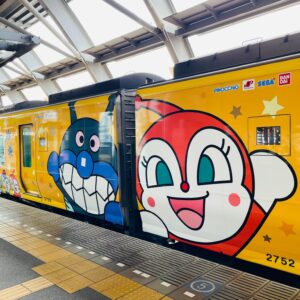
I headed from Kochi Station to Tosa-Kure Station and enjoyed the “Landscape of Kure Port and Fisherman Town“.
In February 2011, “Landscape of Kure Port and Fisherman Town” was selected as the national important cultural landscape for the first time in Japan as a fisherman’s town. The unique cultural landscape centered on the fisherman’s town and fishing port that developed along with the bonito fishing is highly evaluated. Kure Port has developed as one of the important ports for transporting goods such as forest resources produced in the Shimanto River basin to the Kansai region. It has also prospered as one of the centers of bonito fishing.
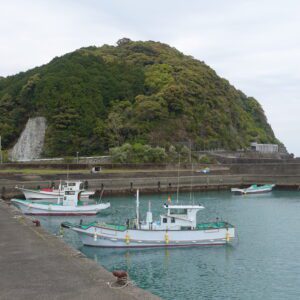
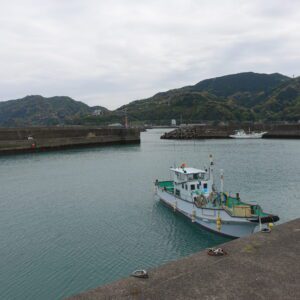
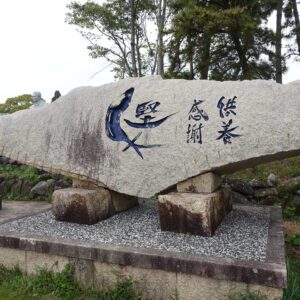
There was almost no traffic in the city around Kure Port, so I couldn’t feel the liveliness of the fisherman’s town. I felt melancholy because there was no traffic. There was a corner where old signboards from the Showa era were collected, but the signboards made me feel more melancholy. In order to make the “Landscape of Kure Port and Fisherman Town” a tourist destination, it may be necessary to make drastic strategic changes.
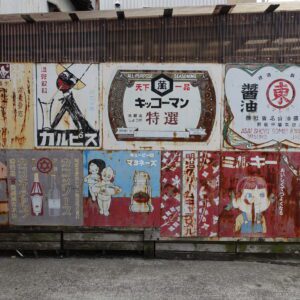
Kure Hachimangu Shrine is Sochinju (the center place to pray for local gods) of Kure. It was enshrined on the beach of Kure and is venerated by fishermen as the guardian deity of the sea. It was built around 1392, and the current shrine is rebuilt in 1825. The “Kure Hachimangu Shrine Autumn Festival”, which is one of the “Three major festivals in Tosa (Kochi)”. Since it is built near the sea, you can see the sea from the precincts.
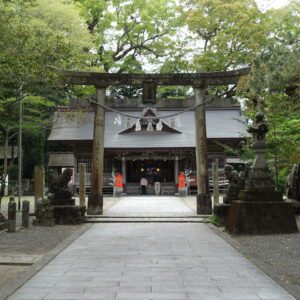
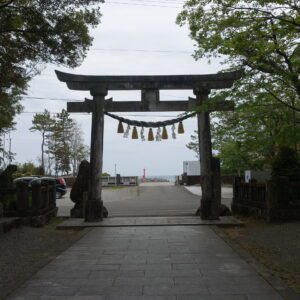
The characteristic of Kure Hachimangu Shrine is the Ema (votive horse tablet) unique to the bonito fishing town. Bonito and bonito tataki horse votive tablets were dedicated. The plates inside the shrine was also wonderful.
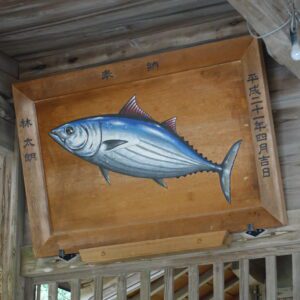
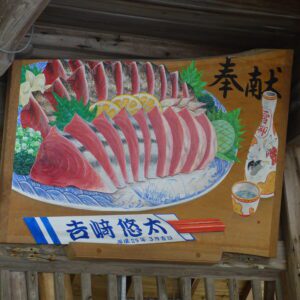
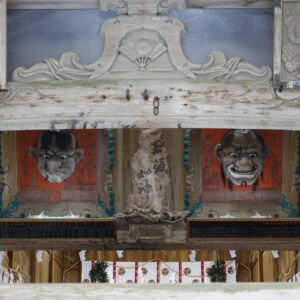
Nishioka Brewery, located near Tosakure Station, is the oldest brewery in Kochi prefecture with a history of 241 years, founded in 1781 in the middle of the Edo period. Since the founding of the brewery is older than 1836, when Ryoma Sakamoto was born, Ryoma Sakamoto may have drank sake from Nishioka Brewery.
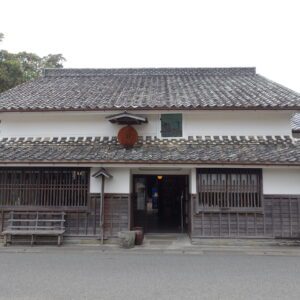
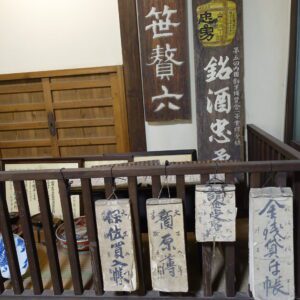
I moved from Tosakure station to Nakamura station, rented a bicycle and went to Ichijo Shrine. I rented a bicycle for 24 hours for the next day’s Shimanto River cycling. The 24-hour charge was Yen 2,000.
It took less than 5 minutes by bicycle from Nakamura Station to Ichijo Shrine. It takes about 20 minutes on foot. The origin of Ichijo Shrine is that a shrine was built in 1607 by Tosa Ichijo’s surviving retainer to enshrine the spirits of successive family of Tosa Ichijo. The current main shrine was built in 1944.

The origin of Tosa Ichijo clan was that the former Kampaku (the chief adviser to the Emperor) Norifusa Ichijo went to Tosa Hatanosho (now Shimanto City), which was his territory. He has escaped from Kyoto, which is confused by the Onin War in 1468.
The “Nakamura Gosho (Imperial palace)”, which was based on Norifusa Ichijo and its descendants, was in the precincts of the current Ichijo Shrine. Nakamura, where Tosa Ichijo clan was based, is called “Little Kyoto of Tosa” because the town was created to imitate Kyoto.
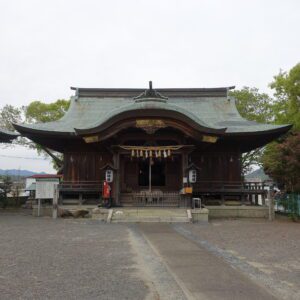
The annual festival is called “Ichijo Festival” and is also counted as one of “Three major festivals in Tosa (the others are “Kure Hachimangu Shrine Autumn Festival” in Nakatosa Town and “Akiba Festival” in Niyodogawa Town)”. However, there is a theory that the “Three major festivals in Tosa (Kochi)” replace the “Ichijo Festival” with the “Shinane Festival” in Kochi City.
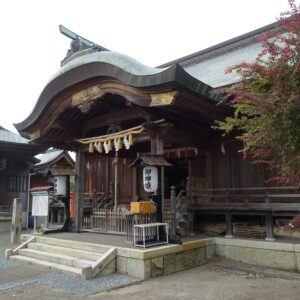
I went to Fuba Hachimangu Shrine, which is about 5 minutes by bicycle from Ichijo Shrine.
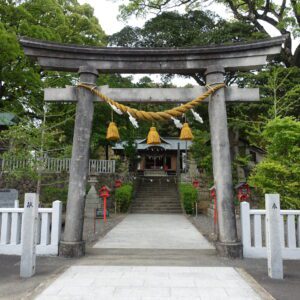
Fuba Hachimangu Shrine was founded by Norifusa Ichijo, who built Hachimangu in 1469-1487 in the middle of the Muromachi period. After being venerated as the guardian deity of Tosa Ichijo clan, it was worshiped by the Yamauchi family, the lord of the Tosa domain, during the Edo period.
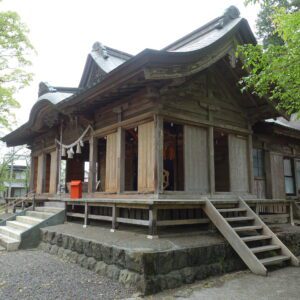

The main shrine of Fuba Hachimangu Shrine is a national important cultural property. The main shrine was built in 1559. You can see the style of the late Muromachi period (1336-1573).
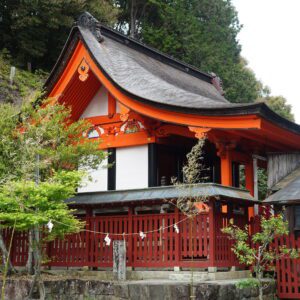
Meals
I had to wait for about 2 hours for the limited express train from Kochi Station to Tosakure Station, so I had breakfast at “Chinmi-do” in “Hirome Market“. “Hirome Market” is open from 10 am to 10 pm, so it is a very convenient market for tourists.
“Chinmi-do” is the largest store in “Hirome Market”. They have so many seafood and food of the mountains that are unique to Kochi that we can’t imagine them in the market. I ate “Noresore”, “Dorome (raw whitebait)”, “Crab innards”, “Whale sinewy meat”, “Grilled mackerel sushi” and drank a sake “Senchu Hassaku”.
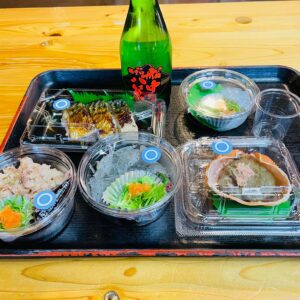
“Noresore” is a fry of conger eel (juvenile conger) and is a marine delicacy in Kochi prefecture. “Noresore” has a white and transparent body, and is also called a water fairy because of its mysterious appearance. The season for “Noresore” from Kochi prefecture is from February to May. In addition, “Noresore” is the name spread all over the country in Kochi prefecture.

In Kochi prefecture, whale fishing has been flourishing alongside bonito for a long time. Currently, the catch whales is limited, so it is not possible to catch whales off the coast of Kochi, and minke whales from the Southern Ocean research whaling are used for whale dishes. In Kochi prefecture, various whale dishes are still eaten as a traditional food culture. I think that “Whale sinewy meat”, which uses whale sinewy meat, is a food unique to Kochi prefecture, which has whale as a food culture. It was a very delicious delicacy with a unique texture.
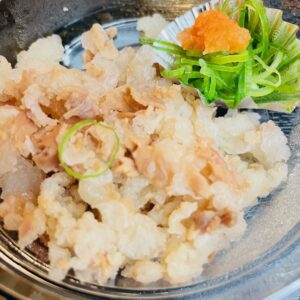
I drank two bottles of Kochi Campagne Brewery‘s craft beer “TOSACO” on the limited express train “Ashizuri No. 3” from Kochi Station to Tosa-Kure Station.
Kochi Campagne Brewery is a young beer company founded in 2017, but it is an up-and-coming beer company that has won numerous awards. They mainly use materials from Kochi prefecture and manufacture craft beer in Tosayamada-cho, Kami city, Kochi prefecture. The package design of the beer bottle is also very good, and it is a beer company that has a good impression.
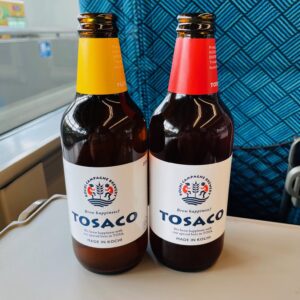
This time I drank “Yuzu Pale Ale” and “Tosa IPA”. “Yuzu Pale Ale” was a refreshing and delicious beer with the aroma and taste of Yuzu. On the other hand, “Tosa IPA” was a beer with a solid taste unique to IPA. The trip was very good while enjoying the beautiful scenery of Kochi prefecture and drinking the delicious craft beer “TOSACO” from Kochi prefecture.
I arrived at Tosakure Station and had lunch at the “Tanaka Fresh Fish Store” in the Kure Taishomachi Ichiba Market. Kure Taishomachi Ichiba Market is the most lively place in the city of Kure.
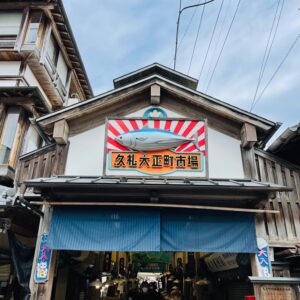
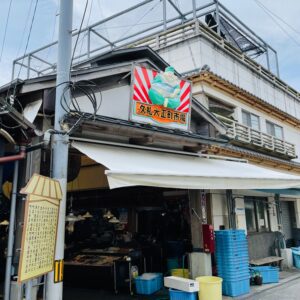
The “Tanaka Fresh Fish Store” sells fresh fish and shellfish, and we can eat the fish and shellfish purchased there at the “Fisherman’s Hut”. The “Fisherman’s hut” was full and waited for about 5 minutes for seats to become available.
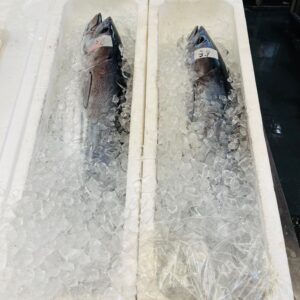
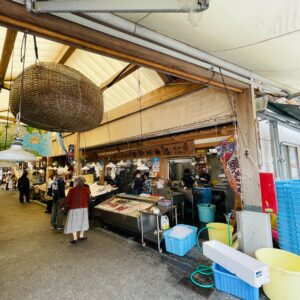
I ate “bonito sashimi”, “bonito tataki (lightly roasted bonito)”, “moray eel tataki (lightly roasted moray eel)” and “Dorome”. A set of rice and miso soup is Yen 300.
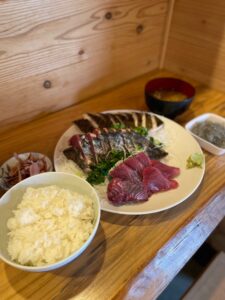
“bonito sashimi”, “bonito tataki (lightly roasted bonito)” were the best tastes in my life. It was a delicious bonito with a sticky texture peculiar to bonito. There was no odor. It takes less than an hour by express train from Kochi station, but I think the “fisherman’s hut” is a restaurant worth the trip. In addition, “Fisherman’s hut” got a high score of 3.67 in Tabelog, and is ranked 15th in all restaurants in Kochi prefecture.
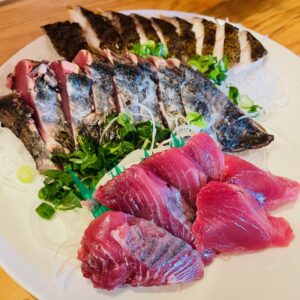
Kochi Prefecture is the number one bonito consuming prefecture in Japan, and the per capita consumption is about five times the national average. It consumes more than twice as much as Fukushima Prefecture, which ranks second. However, the catch is 4th in Japan and the share is 6% (2020). The small catch in Kochi prefecture is quite surprising. The first place is Shizuoka prefecture (30% share), the second place is Tokyo (18% share), and the third place is Miyagi prefecture (11% share).
I ate a skewer of “bonito heart (chichiko)” (Yen 200 per skewer) at “Kushiyaki Ponkichi” at the “Tanaka Fresh Fish Store”. Naturally, only one heart can be taken from one bonito. Therefore, the bonito heart is an extremely valuable part. Also, since it is difficult to keep the freshness, it seems that you can basically eat it only near the fishing port where bonito is fished. I felt the taste was close to that of beef liver. It was just a delicacy.

After enjoying a walk in the city of Kure, I ate “Kureten” at the Okamura Kamaboko store. “Kureten” is a traditional taste of Tosa-Kure and has been in business since 1938. Even if they make 2,000 sheets every day, they may sell out. The fish used for Kureten are fresh small fish caught locally. Small fish are mashed together with their bones, thoroughly kneaded, and then fried in oil.
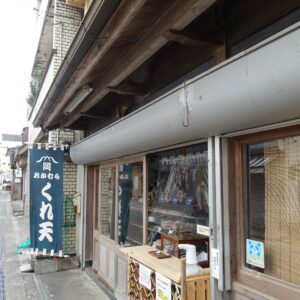
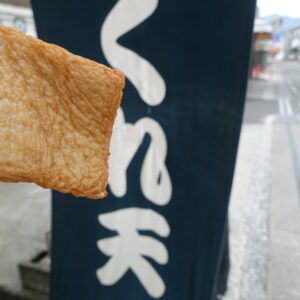
I moved from Tosakure station to Nakamura station, and after a little sightseeing, I had dinner at “Izakaya Kihachi”. I entered the store at 6 pm, but it was already quite crowded and was full at 6:30 pm. Despite Monday night, it’s a hugely popular restaurant. In fact, they got a high score of 3.68 in Tabelog and was 11th in Kochi prefecture as a whole.
I ordered “Shimizu mackerel sashimi”, “bonito salt tataki”, “horse mackerel sashimi”, “eel shiroyaki (unglazed pottery)”, and “fried young Dusky tripletooth goby” at “Izakaya Kihachi”.
“Shimizu mackerel sashimi” was a little past the season in mid-April, but it was a delicious mackerel that melted. At “Izakaya Kihachi,” it was recommended not only to eat mackerel sashimi in regular sashimi soy sauce, but also to eat it in garlic slices and ponzu sauce, just like bonito. I was able to eat the same mackerel sashimi as deliciously as a different dish, because I changed the way I eat it.

“Salt bonito tataki” was an excellent salt tataki made from bonito caught at Shimizu Port. The bonito tataki I ate at “Tanaka Fresh Fish Store” was one of the best in my history, but the “bonito salt tataki” at “Izakaya Kihachi” was as delicious as it was.

Both “eel shiroyaki (unglazed pottery)” and “fried young Dusky tripletooth goby” are Shimanto River specialties. “eel shiroyaki” was a little small eel, but it was very soft and delicious.

Important Points
Here are some things to keep in mind at Kochi Ryoma Airport. The operating hours of the limousine bus bound for Kochi Station at Kochi Ryoma Airport are set according to the arrival time of the plane. Many regional airports other than Kochi Ryoma Airport have introduced similar systems.
For example, JAL491 flight departing from Haneda Airport arrives at Kochi Airport at 9:00, and the corresponding limousine bus departs at Kochi Airport at 9:05. In addition, ANA561 flight departing from Haneda Airport arrives at Kochi Airport at 9:15, and the limousine bus corresponding to this arrival flight departs at 9:20. As you can see, there is only 5 minutes to spare for the arrival time of the plane and the departure time of the limousine bus. Therefore, those who leave their luggage on the plane need to rush to the bus. If you miss the above bus, you will have to wait until the limousine bus departing at 10:00.
6. April 19 (Tuesday) Day 2
I went cycling on the Shimanto River from 8 am on April 19th (Tuesday). It is a 42km long-distance cycling from Nakamura station downstream to Ekawasaki station upstream. It is exactly the same distance as the marathon course. Since it is a “luggage-free trip”, it is possible to cycle by dropping off (borrowing at Nakamura Station and returning at Ekawasaki Station). The route goes upstream of the river, but the slope is so gentle that it didn’t bother me. It took three and a half hours.

The Shimanto River is the longest river in Shikoku with a total length of 196 km. It is the 11th longest river in Japan. The Shimanto River is called “the last clear stream in Japan” because no large-scale dam has been built in the main stream. It is also one of the “three major clear streams in Japan” along with the Kakita River (Shizuoka Prefecture, total length 1.2km) and Nagara River (Gifu Prefecture, total length 166km). It has been selected as one of the Best Water 100’s and 100 selections of unexplored regions in Japan.
It was a very pleasant cycling experience because the Shimanto River and the mountains in the fresh green season were so beautiful and I could always hear the song of bush warbler.
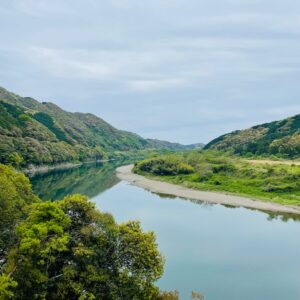
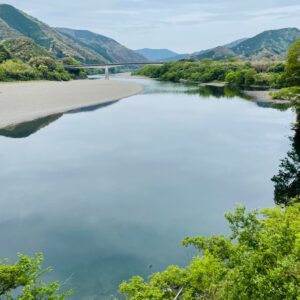
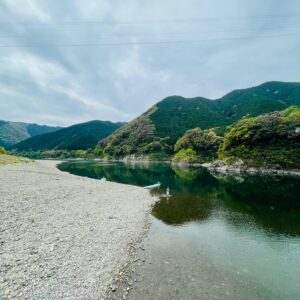
There are many “Chinka-bashi (bridge designed to be underwater during a flood)” in the Shimanto River. The total number of Chinka-bashi is 22 in the mainstream. There is no balustrade on the bridge, and it sinks during typhoons and heavy rains, preventing the entire bridge from being damaged or washed away. It can be said that the existence of the Chinka-bashi makes the Shimanto River more famous.
The Misato Chinka-bashi Bridge is the Chinka-bashi on the downstream side next to the Sada Chinka-bashi Bridge. Although the total length is only 145.8m, it was a very beautiful Chinka-bashi.


The Katsuma Chinka-bashi bridge has a total length of 171.4 m. It is a rare Chinka-bashi with three bridge piers. It became the shooting site of the movie “Tsuribaka Nisshi 14”.


The Iwama Chinka-bashi Bridge has a total length of 120.0 m. It is a beautiful Chinka-bashi.


A carp streamer was swimming in Tsu Ohashi in front of Ekawasaki station. The view of the carp streamer swimming over the Shimanto River was amazing.

I returned my bicycle at Ekawasaki station and headed to Matsumaru station.The train from Ekawasaki Station to Matsumaru Station was a “Tetsudo hobby train” that was a remodeled Kiha 32 type diesel train, with the image of the first Shinkansen 0 series. The “Tetsudo hobby train” started operation in 2014. The remodeling cost was about Yen 15 million.

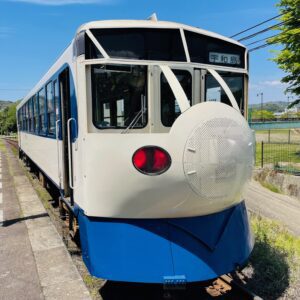
“Okuuchi Rice Terraces and Agricultural and Mountain Village Landscape” was selected as a national important cultural landscape in 2017. It is also certified as one of the “100 Best Rice Terraces in Japan” by the Ministry of Agriculture, Forestry and Fisheries. The rice terraces in the back are about 10km from Matsumaru station, and it takes about 30 minutes by bicycle.
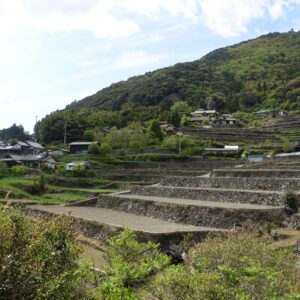
On Google Maps, it is displayed as the Yuzuriha rice terraces, not the Okuuchi rice terraces.
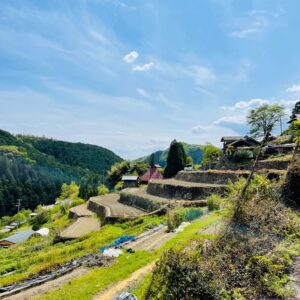
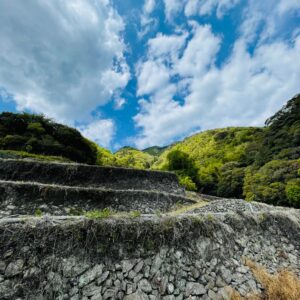
The rice terraces were a very beautiful view. It was one of the most beautiful rice terraces I have ever seen.
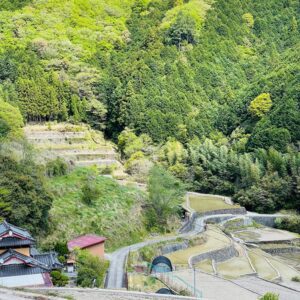
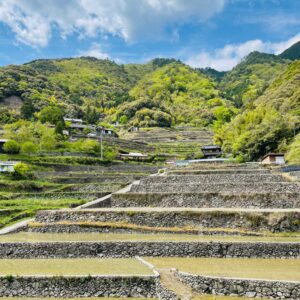
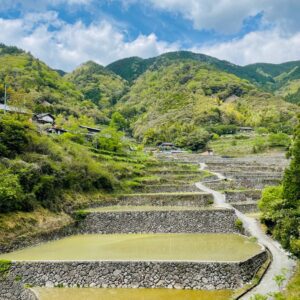
I returned my bicycle at “Niji no Mori Park” and headed from Matsumaru Station to Uwajima Station. We can board a trolley vehicle connected between Ekawasaki Station and Tosa-Taisho Station on the “Shiman Torokko“. There is one train operation per day. I didn’t know the schedule of the “Shiman Torokko” as well as the “Tetsudo hobby train”, but I was lucky enough to get on the train. Next time, I would like to board a trolley vehicle between Ekawasaki Station and Tosa Taisho Station.

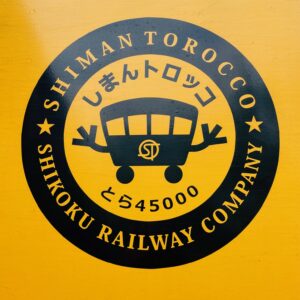
After checking in at the hotel in Uwajima, I went to Uwajima Castle. Uwajima Castle is one of the existing 12 castle towers and is one of the 100 fine castles of Japan established by the Japan Castle Association. The castle tower of Uwajima Castle is a national important cultural property. The entire hill is designated as a National Historic Site. Uwajima Castle has been the residence of the Date clan in Uwajima since Hidemune Date entered the castle in 1615. Date Hidemune is the son of Masamune Date , the lord of the Sendai domain.
The 9th Uwajima feudal lord Munenari Date was called the Four Wise Lords of the Edo period along with Fukui feudal lord Shungaku Matsudaira, Tosa feudal lord Yodo Yamauchi, and Satsuma feudal lord Nariakira Shimazu.
The castle tower of Uwajima Castle is located on a hill of about 80m. It takes about 15-20 minutes to climb the stone steps from “Kori Family’s Nagaya-mon (relocated building, tangible cultural property designated by Uwajima City)” near Uwajima Station. Because the stone steps are steep, climbing to the castle tower is quite tiring.

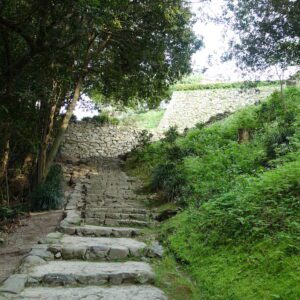
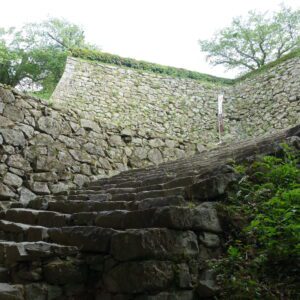
Far from Uwajima Station, on the Tensha-en Garden side, the “Agari-dachi-mon (uphill gate)” is the main gate of the samurai class. It is one of the largest existing “Yakuimon (official gate of samurai clan)” in Japan. Although the date of its foundation has not been specified, it may be the oldest in existence. It is a tangible cultural property designated by Uwajima City.

The view from the 3rd floor of the castle tower of Uwajima Castle was superb. Uwakai Sea looked very beautiful. The current castle tower is an independent tower-type three-story building that was rebuilt by the second feudal lord Munetoshi Date from 1662 to 1671. The castle tower is smaller than Himeji Castle on the 6th floors, but the view from the castle tower is one of the best among the existing 12 castle towers.
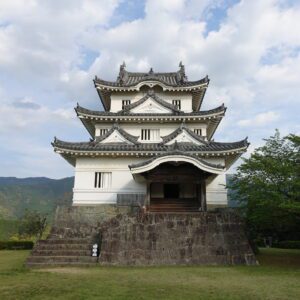
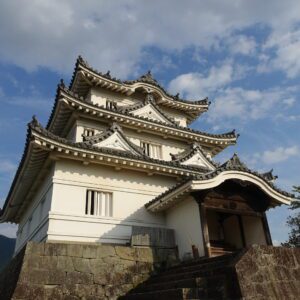
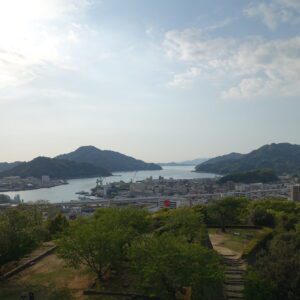
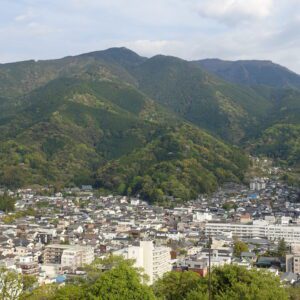
In addition to armor helmets, paintings by Hidekichi Shigemoto, a sumi-e artist from Ehime prefecture, were exhibited in the castle tower.
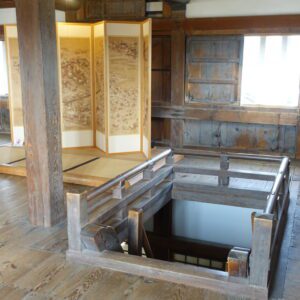
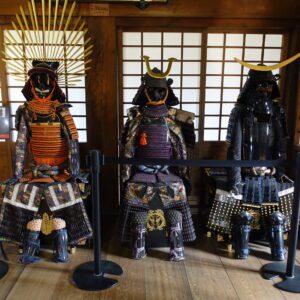
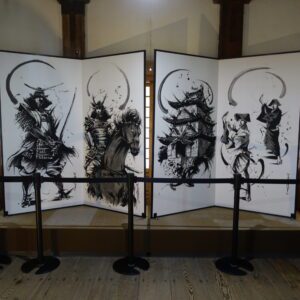
Meals
For breakfast, I had a rice bowl topped with grilled natural eel at “Sakoya”, which is a short distance across the Sada Chinka-bashi Bridge (Imanari Bridge). When I made a request to “eat the natural eel of the Shimanto River”, I was told “Sakoya” by the Shimanto City Tourism Association at Nakamura Station.
“Sakoya” is open from 7:00 to 14:00, so we can have a a rice bowl topped with grilled natural eel as breakfast.
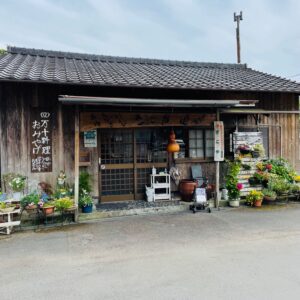
“Sakoya” goes to the Shimanto River every morning to catch natural eels, and if they cannot catch natural eels, they will provide farmed eels. Since eel fishing in the Shimanto River is limited to April 1st to September 30th, you can also eat Sakoya’s natural eels only from April to September. In the Shimanto River, river shrimp fishing can only be done from April 1st to August 31st, and sweetfish fishing can only be done from May 15th to October 15th.
Fishermen use “Longline fishing” from April to May and shift to “Korobashi fishing”. It is said that the earthworms used for “Korobashi fishing” grow to an appropriate size from May to June. Also, after midsummer, it is not possible to catch enough volume of earthworms again, and fishermen return from “Korobashi fishing” to “longline fishing”.
A longline has a structure in which a large number of branch ropes (this is called a longline) are attached to one trunk rope, and a fishing hook is attached to the tip of the branch rope. This is a fishing method in which longlines are set up in the fishing grounds in the evening, and then the longlines are collected the next morning to obtain eels.
“Korobashi” is a device for catching eels in the shape of elongated cylinders made of bamboo or wood. Fishermen set up “Korobashi” in the river in the evening and go to collect “Korobashi” the next morning.
Natural eel account for only 0.4% of the total eels caught in Japan (2020). Natural eel is very valuable.
A large amount of eels were swimming in the aquarium at “Sakoya”. I ordered the rice bowl topped with grilled natural eel (Yen 4,400). A rice bowl topped with grilled cultured eel is Yen 3,080.
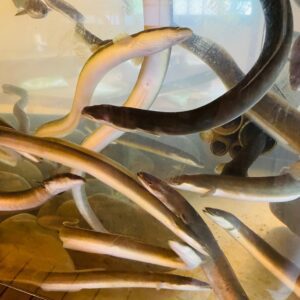
I had various local dishes for dinner at “Hozumi-tei”. I ordered “Sashimi platter”, “Oni Jakoten”, “Fuka no Yuzarashi”, “Hairtail bamboo roll”, “Bonito salted tataki by Fukaura port”, and “Tai (red sea bream) somen”.
The “sashimi platter” contained octopus, red sea bream, great amberjack, bonito, and halfbeak.

Bonito tataki is cooked with straw in front of the counter at “Hozumi-tei”. Straw contains a small amount of oil, so when it is burned, the firepower becomes stronger. Since the heating time is short due to the strong heat, it is suitable for tataki where only the outside is quickly blown and the inside remains rare. The good scent of straw is transferred to the bonito, and a delicious bonito tataki is completed.
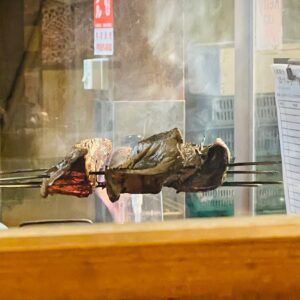
Kochi Prefecture is famous for bonito, but Kochi Prefecture has the fourth largest bonito catch in Japan (2020). Fukaura fishing port in Ehime prefecture has the highest bonito catching port in Shikoku. However, the total catch of bonito in Ehime prefecture is 16th in Japan.
“Oni Jakoten” is a thick “Jakoten”. “Uwajima fish paste studio Miyoshi” produces “Oni Jakoten”. “Jakoten” is a dish from the Nanyo region such as Uwajima City. It is said that the name “Jakoten” comes from the mixed small fish (Zako) used as a raw material. The wife of the owner at “Hozumi-tei” recommended that “Jakoten” is thin these days, but “Oni Jakoten” is thick and delicious, so please try it. The “Kureten” I ate at Tosa Kure the day before was delicious, but the “Oni Jakoten” was also very delicious and impressed.

I was very happy to eat many local dishes at “Hozumitei”. I liked it very much and had lunch at “Hozumitei” the next day. It has been selected as one of the 100 famous restaurants in Tabelog.

Important Points
We need to rent a bicycle to go to the Okuuchi rice terraces (Yuzuriha rice terraces) at the “Fishing Hall” in “Nijinomori Park” from Matsumaru Station. It costs Yen 3,000 a day, but you can rent the latest GIANT E-bike (ESCAPE RX-E +). Cross bikes without an electric assist function are cheap at Yen 1,500 a day and Yen 1,000 for 4 hours. I rented an E-bike because I thought it was a steep slope, but it wasn’t really that steep, so I think I can go with a regular cross bike.
7. April 20 (Wednesday) Day 3
In the morning of April 20th (Wednesday), I rented a bicycle at the Uwajima City Tourist Information Center “Shiroshita” and went around the city of Uwajima. The rental cycle fee is Yen 2,000 a day for GIANT’s E-bike.
The Uwajima Historical Museum has been relocated and used as a building built as the Uwajima Police Station in 1884. The light pink building creates a soft atmosphere that does not seem to be a former police station. The architectural style is pseudo-Western style architecture. It is a national registered tangible cultural property.

I went to the Warei Shrine near the site of Kabasaki Battery, Uwajima Historical Museum.
Warei Shrine is a shrine whose main deity is Kinyori Yanbe. Kinyori Yanbe is a chief vassal of the Date clan who served Masamune Date of the Sendai clan and was assigned as a first chief vassal when Masamune’s son Hidemune Date was moved by the Uwajima clan. Kinyori Yanbe was loved by people of the domain because he tried to lighten the land tax.
However, he was killed in 1620 after being resented by political opponents due to a battle for initiative within the Uwajima domain. After that, the vassals who defeated Koyori Yamake died, and the Uwajima domain was feared as a evil consequence of Kinyori Yanbe because of a series of large earthquakes, typhoons, and starvation. The Warei Shrine was to be built in 1653 to calm the worship of Kinyori Yanbe.
The “Uwajima Ushioni Matsuri (festival)”, which is held every July, is one of the famous festivals in Shikoku. It is the protagonist of the festival, “Ushioni”. Ushioni has a long neck made of log, a demon-faced head, and a sword-shaped tail on a bamboo-framed body that resembles a cow of over 5m. The mask of Ushioni is also displayed in the main shrine of Warei Shrine.
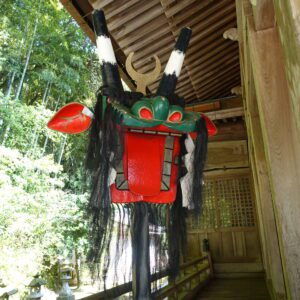
I felt that the main shrine of Warei Shrine was very nice and beautiful. The current main shrine was built in 1951.
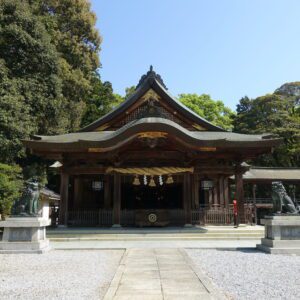
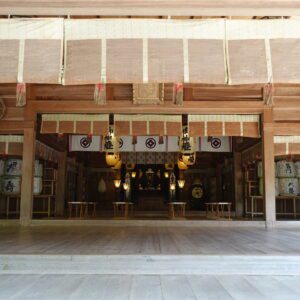
The second torii gate of Warei Shrine is the largest stone structure in Japan (height over 12m). The Taiko Bridge (Kamiyuki Bridge) spans the Sukagawa River that runs between the second torii gate and the shrine gate of Warei Shrine. The Taiko Bridge, which only humans can pass through, has a very nice atmosphere.
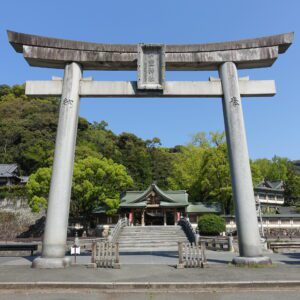
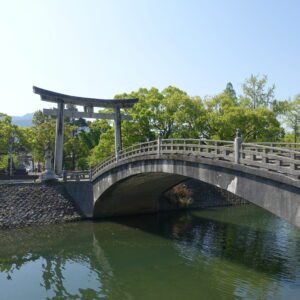
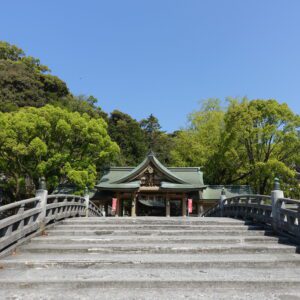
A votive tablet by Hidekichi Shigemoto, a sumi-e artist from Matsuyama City, Ehime Prefecture, is installed in the precincts of Warei Shrine.
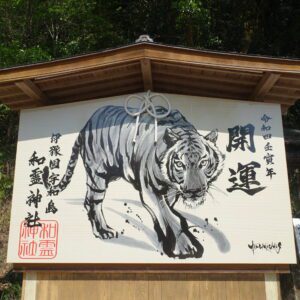
Next to Warei Shrine, I went to Taga Shrine, which is less than 10 minutes on foot. The torii gate at Taga Shrine had a very unusual shape.
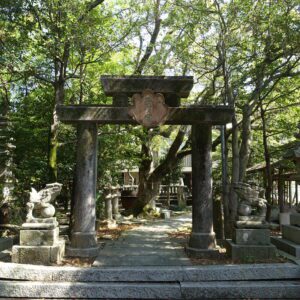
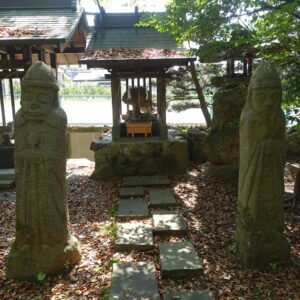
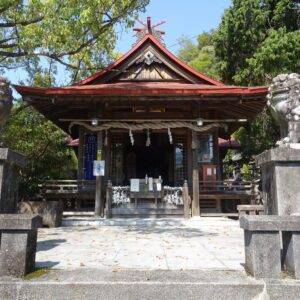
After Taga Shrine, I went to Tensha-en Garden. Tensha-en Garden is Chisen-Kaiyu-shiki-teien (go around the pond style garden) built by the 7th feudal lord Munetada Date as a place of retreat. The garden was completed in 1866 and was named “Tensha-en Garden”. It is a national scenic spot. Munetada Date lived until the age of 98, which is quite a longevity for the Edo period. I think he enjoyed the retreat place “Tensha-en Garden” for many years.
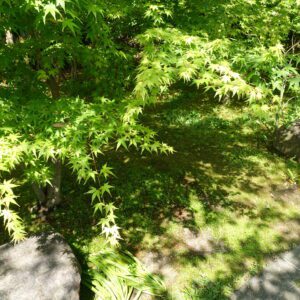
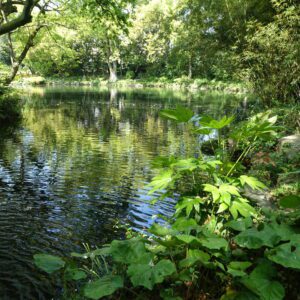
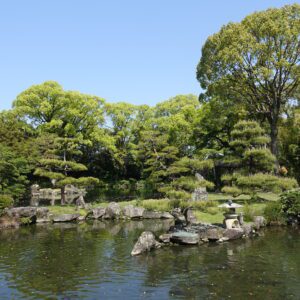
There are many wisteria trellis in the park. It was just the time when the wisteria bloomed (mid-April to early May), and I enjoyed walking around. The Siberian irises were also in full bloom. The Iris roots are in full bloom in early June.
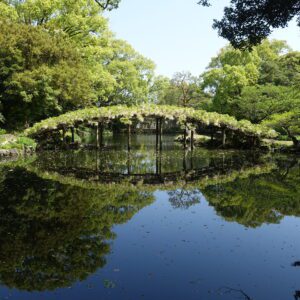
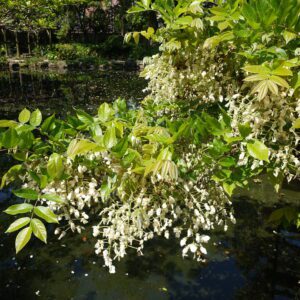
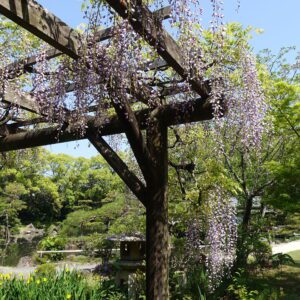
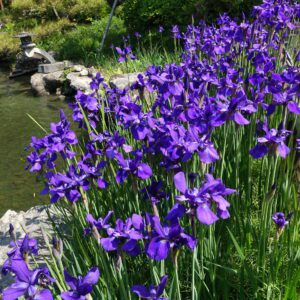
After lunch, I went to “Traditional Buildings Preservation District, Uno-machi, Uwa-cho, Seiyo City”.“Traditional Buildings Preservation District, Uno-machi, Uwa-cho, Seiyo City” has been selected as an national Important Preservation Districts for Groups of Traditional Buildings. Unomachi is a town that prospered as a post town for the Uwajima domain. The old architecture of the Meiji era (1868-1912) and the Taisho era (1912-1926) remains, and it was a fun city to take a leisurely walk.
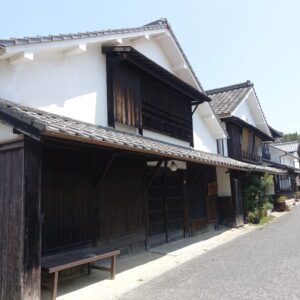
Kaimei School is an elementary school building with a pseudo-Western style architecture built in 1882 with the donation of the townspeople. It was the oldest elementary school in Shikoku. It is a national important cultural property. Kaimei School has a sister building tie-up with the former Kaichi School (Matsumoto City, Nagano Prefecture), which is a national treasure.
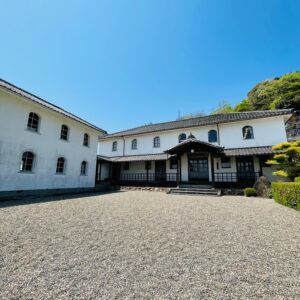
Kaimei School exhibits about 6,000 items such as pre-WWII textbooks and school management materials. The classroom of the Meiji era has been reproduced, and it feels like we have slipped back in time. Kaimei School is also visited by the famous writer Ryotaro Shiba, and is featured in “Kaido wo iku, Minami Iyo / Nishi Tosa Road”.
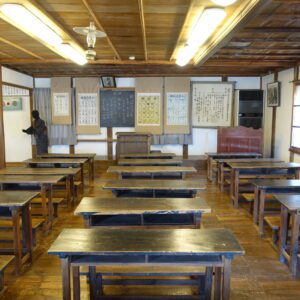
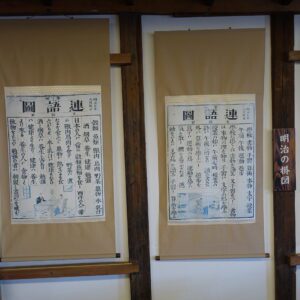
The Uwa Mingukan has a collection of about 6,000 folk tools that were actually used in Uno-machi from the end of the Edo period to the beginning of the Showa period. It was a very enjoyable folk museum to see the large number of exhibits and the skill of the exhibition. I think Uwa Mingukan is one of the leading folk museums in Japan. By all means, it is a folk museum that I would like everyone to visit. It has become a folk museum that I would like to visit every year.
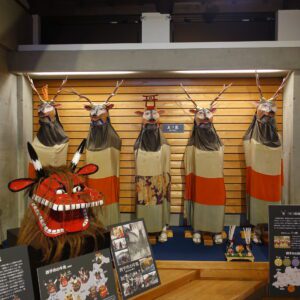
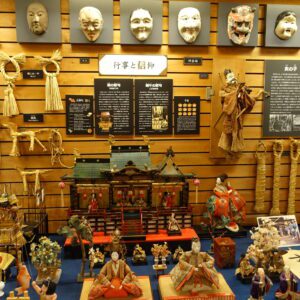
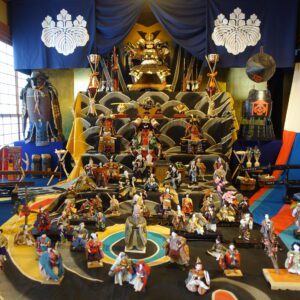
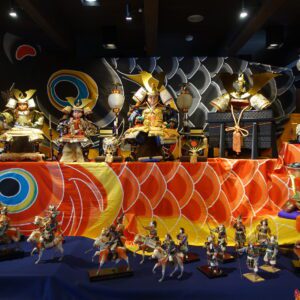
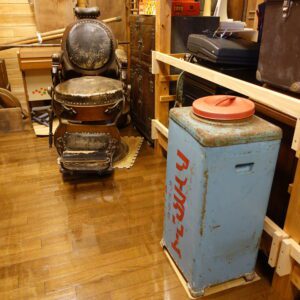
The Uwa Rice Museum has relocated the former Uwacho Elementary School, a wooden school building built in 1928, to introduce “Rice‐growing district Uwa”. There is a corridor with the longest wooden structure in Japan at 109m. You can clean with a cloth in the long corridor. This time, I couldn’t clean with a cloth because I didn’t have enough time. I definitely want to visit again.
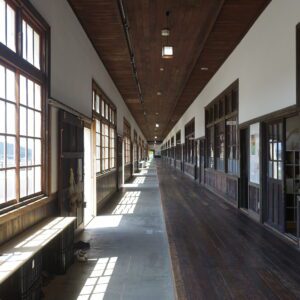

The cityscape of Uno-machi was a very good impression. I regret having scheduled a stay of only one hour. In addition, it has become a city I definitely want to visit.
I moved from Uno-machi station to Iyo-Ozu station.
The Uwakai No. 16 I boarded was just an “Anpanman train”.
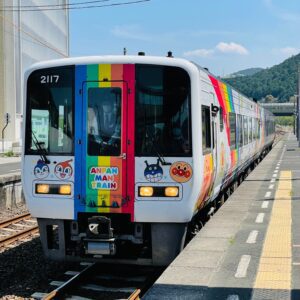
Ozu in the early Edo period was the territory of Takatora Todo. Takayoshi Todo, the son of Nagahide Niwa and the adopted son of Takatora, was in Ozu Castle. Ozu is called “Little Kyoto of Iyo”. It was also the location for the movie “Otoko wa Tsurai Yo Torajiro and Tonosama (long-running series of Japanese comedy movies)”.
The steamship Iroha Maru, known to have been used by Ryoma Sakamoto of the Kaientai, is owned by the Ozu Domain and was lent to the Kaientai by the Ozu Domain.
In Ozu, I first visited Nyohoji Temple. It took about 40 minutes on foot from Iyo-Ozu Station, but about 10 minutes by bicycle. Nyohoji is a temple of the Rinzai sect Myoshinji school, which was founded in 1669 by Yasuoki Kato, the second feudal lord of the Ozu domain, with Yotaku Bankei as the founder of the mountain. The Buddhist temple is a national important cultural property.

Not only the wonderful Buddhist temple, but also the temple gate and the bell tower are quaint, and I really like Nyohoji. There was also a raccoon dog on the approach to the temple gate. I think it is a typical old temple in the mountains in Japan. It is difficult to go on foot, but I would like many people to rent an electrically power assisted bicycle.
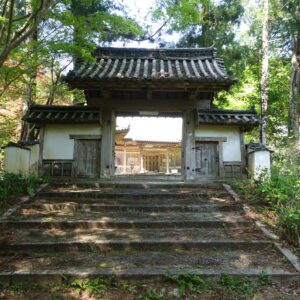
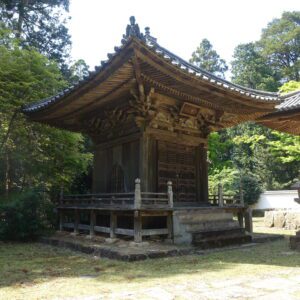
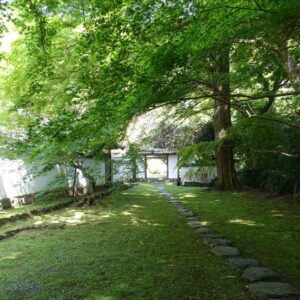
Next to Nyohoji, I went to Bansenso (former Matsui family residence), which is about a 20-minute walk away. It was a little over 5 minutes by bicycle. Bansenso (formerly Matsui Family Residence) is a villa built in 1926 by Kunigoro Matsui, who made a great fortune by running a trading company in the Philippines and running department stores in various places such as Manila. It is a wooden three-story building that stands on a hill. From the window, you can see the natural landscape such as Hijikawa and neighboring mountains.

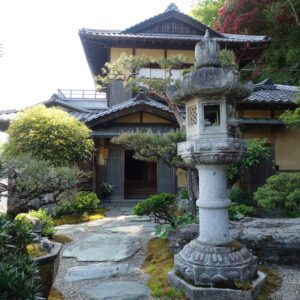
Bansenso will guide you around the building for free. She was a very detailed explanation and was impressed by the smooth explanation.
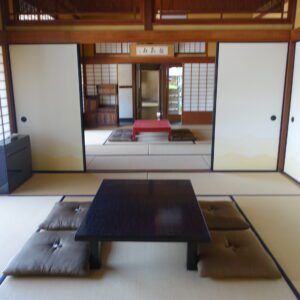
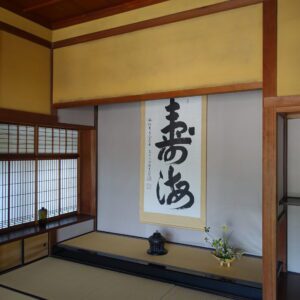
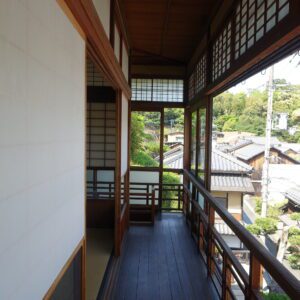
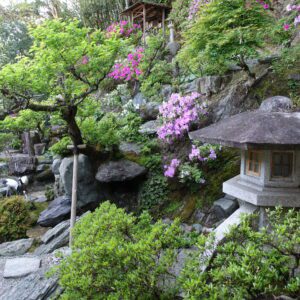
Garyu Sanso is a 5-minute walk from Bansenso. Garyu Sanso is a sukiya-style building built in 1907 by Torajiro Kawachi, a trader in the Meiji era, as a villa. It stands on the edge of Hijikawa, which is named “Garyu Fuchi”. It is designated as a national important cultural property, and the area including the garden is a national scenic spot. In 2011, it won one Michelin Green Guide Japan star and was selected as one of the “100 Famous Architectures in the World” by the NHK Dream Museum.
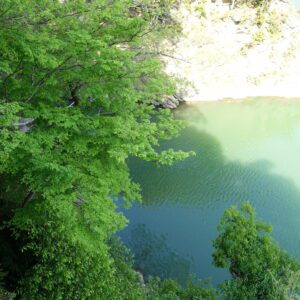
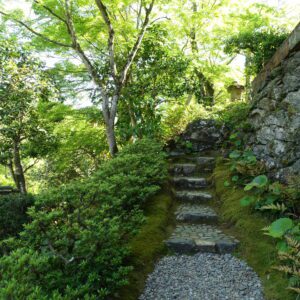
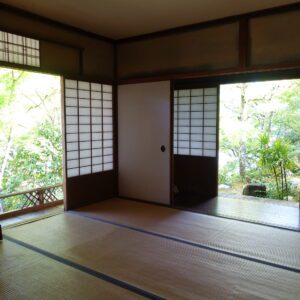
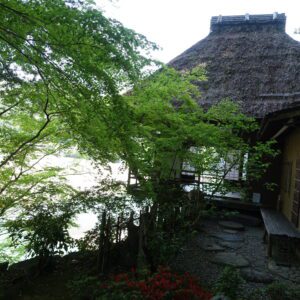
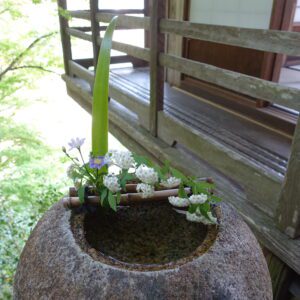
The castle tower of Ozu Castle was demolished in 1888. The current castle tower of Ozu Castle was restored in 2004. The four turrets that have not been dismantled are all designated as national important cultural properties.

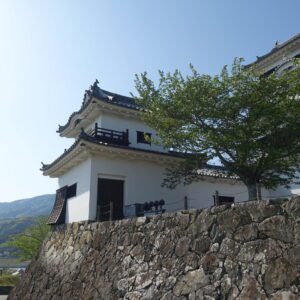
The Sannomaru South Corner Turret is located a little away from the castle tower. Right next to the Sannomaru South Corner Turret, there is the national tangible cultural property “Former Kato Family Omoya,” which is now a hotel.

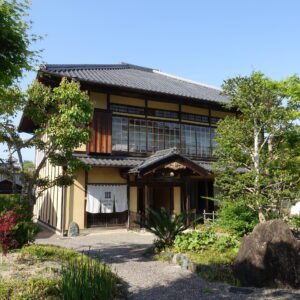
Ozu Castle, which stands on the banks of Hijikawa, looks good in the distant view. It is clear that Takatora Todo, a master of castle construction, successfully used Hijikawa as a natural moat.
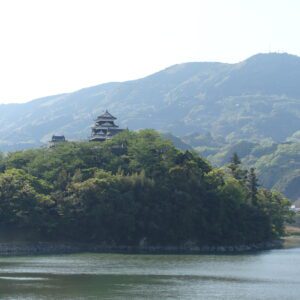
I moved from Iyo-Ozu station to Uchiko station. “Uchiko Town Yokaichi Gokoku Traditional Buildings Preservation District” is designated as a national Important Preservation Districts for Groups of Traditional Buildings. Uchiko Town was a town that prospered from the late Edo period to the Meiji period due to the production of Japan wax. Currently, there is only one store that produces Japan wax.
The cityscape of Uchiko was wonderful. The streets of about 600m are lined with traditional townhouses and mansions of wealthy merchants. Most of the houses are still inhabited by Uchiko people.
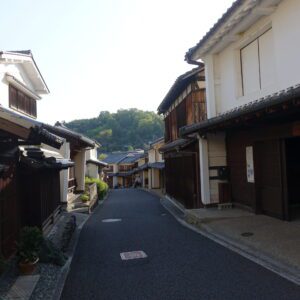
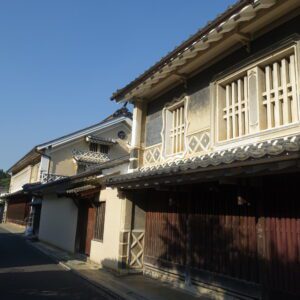
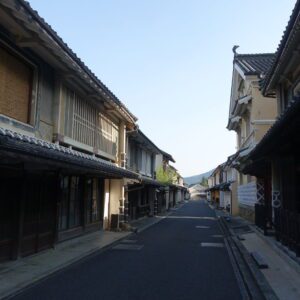
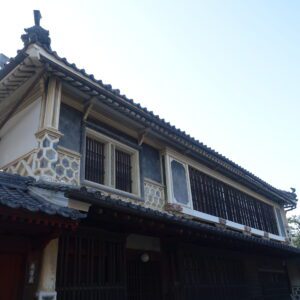
The Kami-haga House, Hon-haga House and Omura House are national important cultural properties.
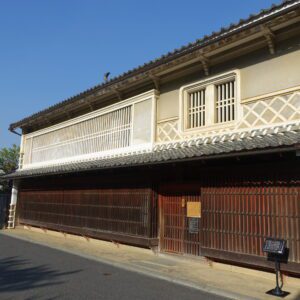
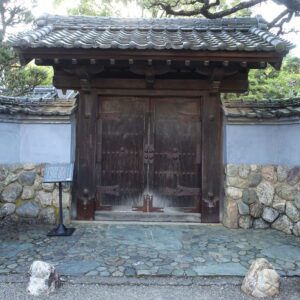
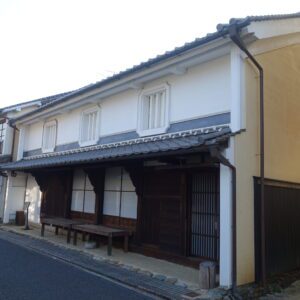
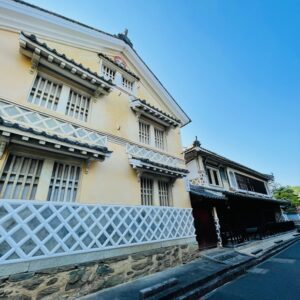
Omoriwa Warosoku is the only remaining Japan wax shop in Uchiko. Japan wax is wax extracted by steaming fruits such as Japanese wax tree (Rhus succedanea) of the family Anacardiaceae, and then squeezing the high melting point fat contained in the pulp and seeds. The candle craftsman explained the Japan wax very carefully. I bought Japan wax for the first time. Japan wax has a very soft feel and feels warm.
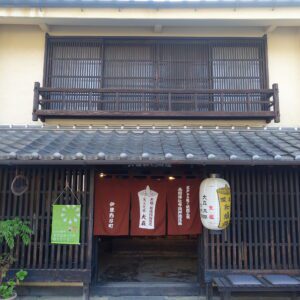
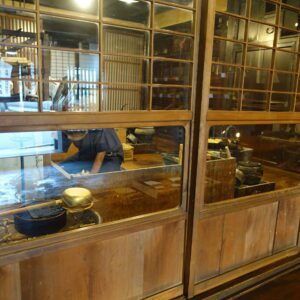

Uchiko-za was founded in 1916 to celebrate the throne of Emperor Taisho. It is a full-fledged playhouse with a pure Japanese style, made of a two-story wooden tiled roof. It is a national important cultural property. I couldn’t tour the inside because the business hours were until 16:30, but I would like to see the inside the next time I come to Uchiko.
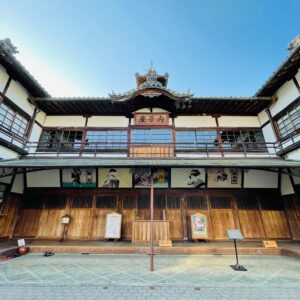
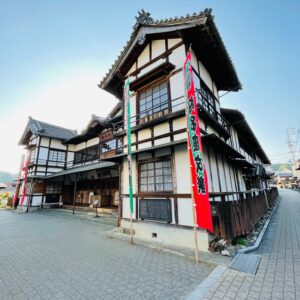
The “Oni Train” was stopped at Uchiko Station. Kihoku Town, Ehime Prefecture, is the only local government in Japan that has the word “Oni (Demon)” in it, and is promoting town development with the concept of “Demon town.” The “Oni Train” just started operation in July 2021. The “Oni Train” operate 4 trains a day.
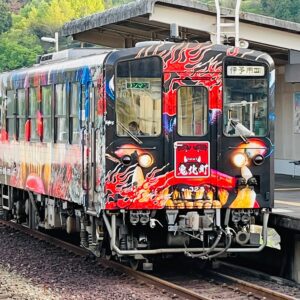
Meals
I had breakfast at the restaurant “Sirene” of “JR Hotel Clement Uwajima“. I had “Tai-meshi Breakfast Set” (Yen 1,800 including tax) that I hadn’t eaten since I came to Uwajima. “Uwajima Tai-meshi” is a dish of red sea bream sashimi caught in the Uwa Sea, mixed with soy sauce, raw eggs, seaweed, etc. over rice. Simply put, it is a raw egg over rice with sashimi of red sea bream and seaweed. I think “Uwajima Tai-meshi” is a nationally famous local dish.
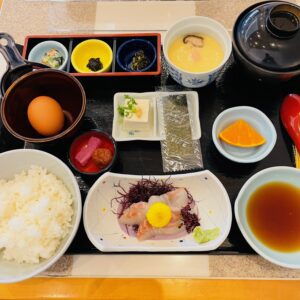
It is said that “Uwajima Tai-meshi” originated from the Iyo Suigun (navy) of the Uwa Sea, who mixed rice in a bowl with soy sauce and sashimi.
On the other hand, “Tai-meshi” in Matsuyama City, Ehime Prefecture is a rice cooked with grilled sea bream. I prefer sashimi of red sea bream, so I prefer “Uwajima Tai-meshi” to “Matsuyama Tai-meshi”.
The “Tai-meshi breakfast set” of “Sirene” was very delicious and I ate it in no time. It was a very happy morning to be able to eat delicious local food.
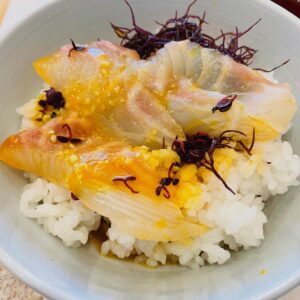
After enjoying a two-hour sightseeing tour of Uwajima on a rental cycle, I had lunch at “Local cuisine Hozumi-tei“. The supper the day before at Hozumi-tei was very delicious, so I revisited to eat “Uwajima Tai-meshi” at “Hozumi-tei”. “Hozumi-tei” is one of the 100 famous tabelog restaurants.
I ordered “Tai-meshi / Satsuma-meshi Yokubari (greedy) Set” (Yen 1,650 including tax) and “Fukumen” (Yen 715 including tax) at “Hozumi-tei”. “Tai-meshi / Satsuma Yokubari (greedy) Set” is a set of “Uwajima Tai-meshi” and “Satsuma-meshi”. It comes with two rice bowls and a wooden container for cooked rice, so you can enjoy “Uwajima Tai-meshi” and “Satsuma-meshi”, which have completely different tastes.

“Satsuma-meshi” is a local dish of barley miso, soup stock, and roasted fish mixed in a earthenware mortar and sprinkled over rice or barley rice. The wife of the owner of “Hozumi-tei” told me at dinner the day before that “Satsuma-meshi” was often eaten for dinner at homes in Uwajima in the past. “Satsuma-meshi” is more like the taste of Mom’s cooking than “Uwajima Tai-meshi” in Uwajima.
“Uwajima Tai-meshi” from “Hozumi-tei” was very delicious. However, the taste of the sauce seemed to be stronger than that of “Uwajima Tai-meshi” of “Sirene”. In any case, “Uwajima Tai-meshi” is a dish of red sea bream sashimi mixed with soy sauce, raw eggs, and seaweed, so I don’t think there is a big difference in taste.

On the other hand, “Satsuma-meshi” had a strong impact on the taste and aroma. “Satsuma-meshi” was a delicious dish that seemed to be addictive, contrary to its plain appearance. Whenever I visit Uwajima again, I definitely want to eat “Satsuma-meshi”.

After arriving in Matsuyama City, I had dinner at the izakaya “Oiri-tei” near the downtown Okaido. I ate “sashimi platter”, “grilled eggplant”, “Noresore (juvenile conger)”, and “squid sashimi and natto” at “Oiri-tei”. “Oiri-tei” is a small izakaya run by a couple.
“Assorted sashimi” includes red sea bream, “Hogo (scorpion fish)”, bonito, striped jack, chicken grunt, flathead, Redspotted Grouper, Spotted halibut, Japanese common squid (Pacific flying squid), vermiculated puffer, great amberjack, and halfbeak. The great kindness about “Oiri-tei” is that the type of fish in the “sashimi platter” is handwritten on paper according to the position on the plate. Therefore, I was able to post such many types of fish on our blog.

All the fish in the “sashimi platter” were from Ehime prefecture. All kinds of sashimi were really delicious. Especially, the ones that were touchingly delicious were the flathead and vermiculated puffer. Most of the “Oiri-tei” were local customers, but they all said that the sashimi of “Oi-tei” was the most delicious in Matsuyama. I was also very satisfied.
“Hogo” is a scorpion fish, a dialect of Matsuyama City. By the way, it is said that scorpion fish is called “Mahogo” in Uwajima city.
Vermiculated puffer is a member of the globefish department tiger puffer genus and is a medium-sized puffer with a total length of about 35 cm. Since it is cheaper than tiger puffer and purple puffer, it seems that vermiculated puffer is popular as a commoner’s blowfish. However, for me, the sashimi of vermiculated puffer I ate that day was the best.
“Akou” is a Redspotted Grouper. “Kurushima Strait Akou (Redspotted Grouper)” (season: July-September) is “PRIDE FISH” in Ehime prefecture selected by Japan Fisheries Co-operative. The Kurushima Strait is a strait located in Imabari City, Ehime Prefecture. The Kurushima Strait is a great fishing ground blessed with fast currents and abundant plankton. The taste of summer “Akou” seems to be exquisite, so I definitely want to eat “Kurushima Strait Akou” in the summer.
I didn’t eat rice at “Oiri-tei”, so I ate “Original Mitsuhama-yaki” at Yakiyaki Iron Plate Grill “Himawari Ichibancho Train Street Store”.
“Mitsuhama-yaki” is an okonomiyaki that is eaten around the former Mitsuhama-cho in the western part of Matsuyama city. Mitsuhama’s comfort food. In the Taisho era, wheat flour melted in water was baked, green onions were put on it, and the sauce was sprinkled on it. This “Issen Yoshoku (Cheap western food)” is said to be the origin of “Mitsuhama-yaki”. Unlike Hiroshima-style okonomiyaki, “Mitsuhama-yaki” is folded in half.

“Hiroshima-style okonomiyaki”, which has a similar shape, is also based on “Issen-yoshoku,” which was originally a snack for children. It is said that Isao Ise of “Micchan” and Zenjiro Nakamura of “Zensan” are the originators of Hiroshima-style okonomiyaki. they opened okonomiyaki shops in the street stalls built around 1950 after World War II. The picture below is the Hiroshima-style okonomiyaki of “Micchan Sohonten” that I ate in March 2022.
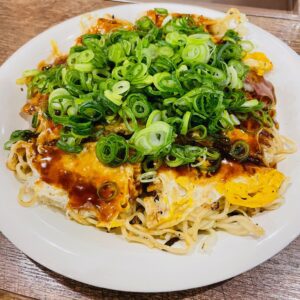
The biggest difference between “Mitsuhama Yaki” and “Hiroshima-style okonomiyaki” is how to make it. At Mitsuhama, the dough is baked on an iron plate and seasoned noodles are placed on it. On the other hand, in Hiroshima, it is common to put cabbage and ingredients on the dough, and then cover the dough and ingredients on the noodles. The first photo below is “Mitsuhama-yaki” and the second is “Hiroshima-style okonomiyaki”.

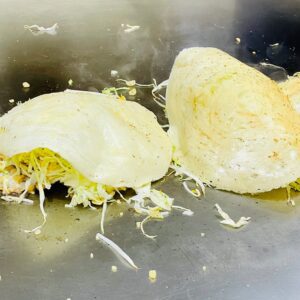
The “Original Mitsuhama Yaki” of “Yakiyaki Iron Plate Grill Himawari” was as delicious as the popular store “Micchan Sohonten” in Hiroshima. I have traveled to Matsuyama City several times, but this time I ate “Mitsuhama Yaki” for the first time. I regret not having eaten until now. From now on, when I go to Matsuyama, I will definitely eat “Mitsuhama Yaki”. “Hiroshima-style okonomiyaki” is famous all over the country, but I think “Mitsuhama-yaki” should be more famous. By all means, I want many people to eat “Mitsuhama Yaki”.
Important Points
The rental cycle fee for electrically power assisted bicycles is as low as Yen 600 for 2 hours and Yen 1,000 a day at the Iyo-Ozu Station Tourist Information Center. It takes time to walk around the city of Ozu, so it is efficient and recommended to go around the sightseeing bases by bicycle. The rental cycle fee for electric assist at the “Travel Information Center” at Uchiko Station is cheap at Yen 900 within 3 hours and Yen 1,200 a day. On the other hand, at the Uwajima City Tourist Information Center “Shiroshita”, the rental cycle fee is Yen 2,000 (E-bike) per day. There is no hourly rental, so it feels quite expensive.
In Uchiko, there are many facilities such as the Japan Wax Museum and Uchiko-za that close at 16:30. On the other hand, restaurants are often open at 18:00. Therefore, I think that many tourists go to Matsuyama from Uchiko and have dinner. It is inconvenient for tourists, and it may be difficult for Uchiko to make money by sightseeing.
8. April 21 (Thursday) Day 4
I went to Taisanji Temple on the morning of April 21st (Thursday). It takes about 15 minutes on foot from the Katamawari bus stop to the Taisanji main hall. It is a little over 5 minutes on foot to the Ninomon (Deva gate), which is a national important cultural property, but you need to walk a gentle slope for about 10 minutes from the Ninomon to the main hall of Taisanji Temple. The slope to the main hall gets tired when we walk. It was sung in a Buddhist pilgrim’s hymn as “If you go up to Taisan, you may sweat. No suffering shall later come the next life”.

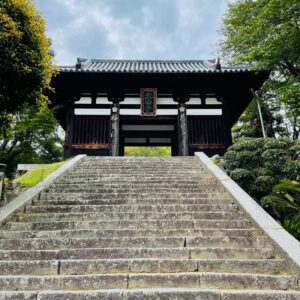
Ninomon (Deva gate) is an eight-legged gate built by Irimoya (building with a gabled, hipped roof), which was rebuilt in 1305. Passing through the Ninomon raises expectations for the main hall of the national treasure. The Sannomon Gate (Shitenno Gate) is a gate rebuilt in 1683.
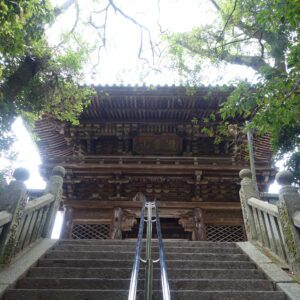
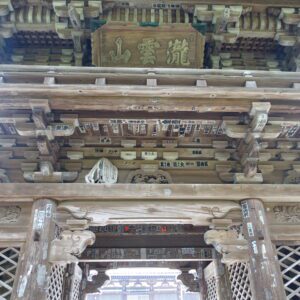
As soon as you pass through the Sannomon Gate (Shitenno Gate), you will find the main hall of the national treasure. The main hall was built in 1305 during the Kamakura period. The roof is a tiled roof made by Irimoya, which is the largest wooden structure in Ehime prefecture. The architectural style is based on Wa-yo (traditional Japanese style), and the details are based on Daibutsu-yo (Tenjiku-yo : Indian-style). It’s a wonderful main hall, and I’ve been fascinated by it for a while.
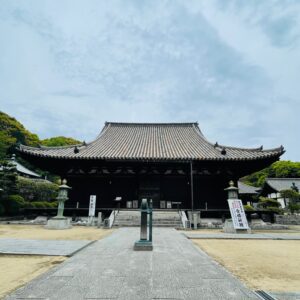
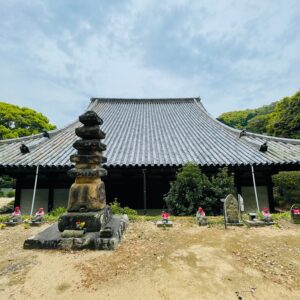
Taisanji Temple was founded in 587. Mido (enshrinement hall of a buddha) is said to have been built overnight. After that, in 739, at the request of Emperor Shomu, Gyoki Bosatsu carved an eleven-faced Kannon statue (a national important cultural property) and made it the principal image.
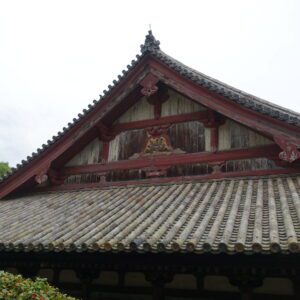
The bell tower was rebuilt in 1655. Temple bell, made in 1383, is a tangible cultural property designated by Ehime Prefecture.
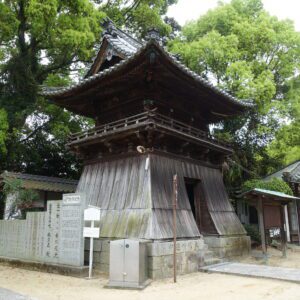
The main hall of Taisanji Temple, a national treasure, is really wonderful, and although it take some time from downtown Matsuyama, I think it is a temple worth visiting.
After Taisanji Temple, I went to Taisanji Temple. The main hall of Taihoji Temple is the oldest wooden building in Ehime prefecture and is designated as a national treasure. The architectural style is Wa-yo (traditional Japanese style). It is estimated to have been built in the early Kamakura period (1185-1333). According to the temple biography, it is said that the local lord Ochi Tamaoki founded Daihoji Temple in 701.

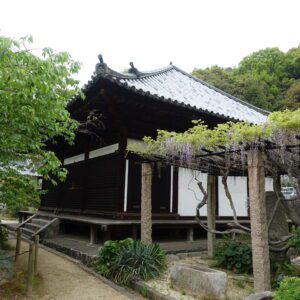
Three Buddhist statues, including one sitting wooden statue of Amida Nyorai, which is the principal image of the Buddha, are designated as national important cultural properties.
The main hall of Taihoji Temple is very small compared to the main hall of Taisanji Temple, and the Uba-zakura (faded beauty) in front of the main hall makes it difficult to see the main hall, so I could not understand its value as a national treasure.
After returning to Okaido from Daihoji Temple and having lunch, it began to rain quite heavily. Therefore, the only thing I could do in the afternoon was to go to Bansuiso, which is very close to Okaido, and take pictures.
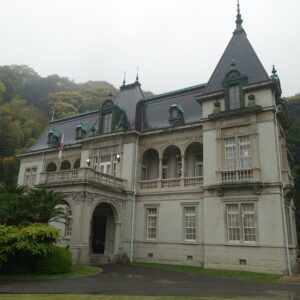
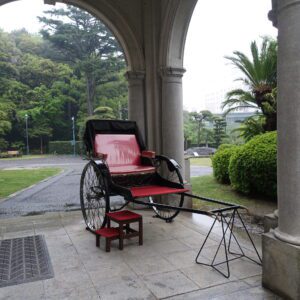
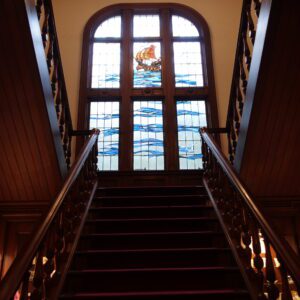
The main building of Bansuiso and the manager’s building are national important cultural properties. Bansuiso was built in 1922 by Count Sadakoto Hisamatsu, a descendant of the former Matsuyama feudal lord, as a villa. A French Renaissance-style Western-style building designed by architect Shichiro Kigo. Shichiro Kigo designed Bansuiso after several months of traveling around Europe to study Western architecture. Bansuiso is the oldest reinforced concrete building in Matsuyama City.
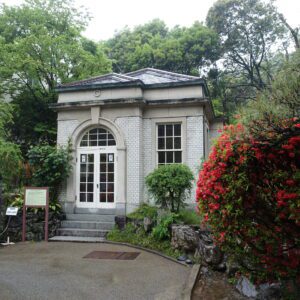
The architect Tadao Ando designed the “Saka no Ue no Kumo Museum” next to Bansuiso.
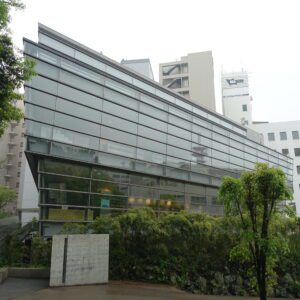
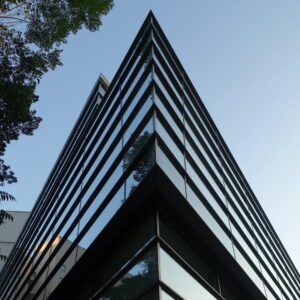
It was a pity that I couldn’t go to the planned sightseeing spot this time due to the rain in the afternoon. I also went sightseeing in Matsuyama in November 2020, so I will post some photos of that time.
Matsuyama Castle is one of the existing 12 castle towers. The castle tower was rebuilt in the latter half of the Edo period and is the newest castle tower among the existing 12 castle towers. I could see a distant view this time, but I gave up going near Matsuyama Castle due to the rain.
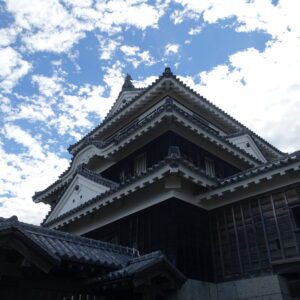
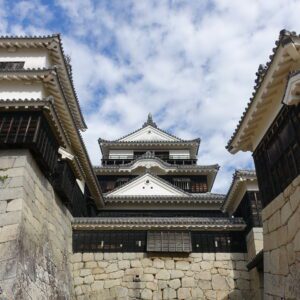
Twenty-one buildings, including the castle tower of Matsuyama Castle, have been designated as national important cultural properties, and the remains of the castle have been designated as national historic sites. Matsuyama Castle is one of Japan’s three major Hirayama castles (castle on a hill in the plains : the others are Himeji castle and Tsuyama castle), and one of the three major interconnected-style Hirayama castles (the others are Himeji castle and Wakayama castle). We can clearly see that Matsuyama Castle seen in the distant view this time is an interconnected-style Hirayama Castle. The interconnected-style is one of the territorial types of the castle tower, and the castle tower, the small castle tower, and the turret are connected by a corridor or a Tamon turret so that they form a square when viewed from the sky.
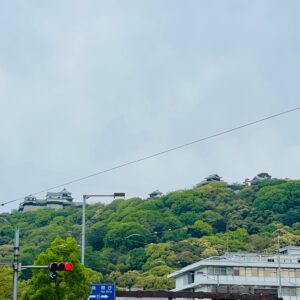
Ishiteji Temple is a fun temple to visit, with a mantra cave and unusual stone Buddha statues in the precincts. It was selected as a 1-star by the 2009 Michelin Green Guide Japan.
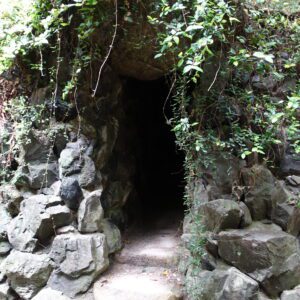
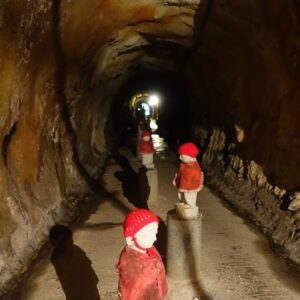
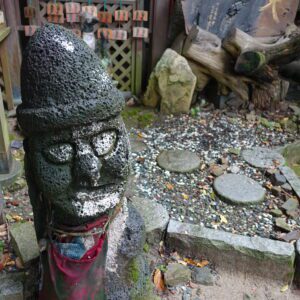

Ishiteji Temple is popular for its unique stone Buddha. However, it is a fascinating temple with many cultural properties. The Nioumon (Deva gate) of Ishiteji Temple is a national treasure. It is believed to have been built in 1318.
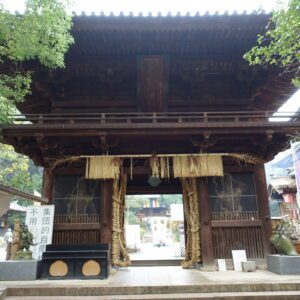
There are eight national important cultural properties at Ishiteji Temple: the main hall, the three-storied pagoda, the Kariteimotendo, the bell tower, the Gorinto, the bronze bell, and the wooden statue of Nio (Two Deva Kings).

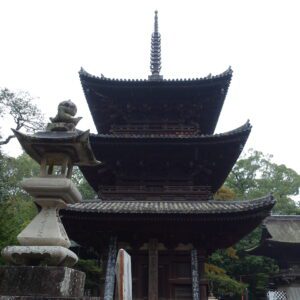
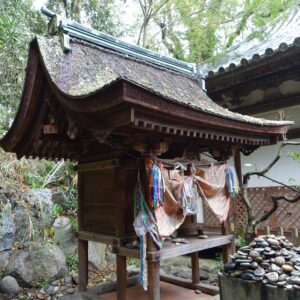

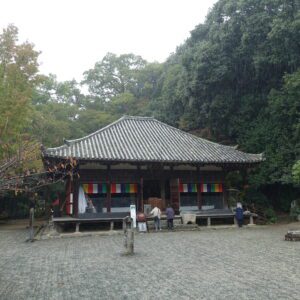
The Dogo Onsen Main Building is also a national important cultural property. It is about a 15-minute walk from Ishiteji Temple.

It was a pity that it rained on the last day of this trip to Kochi and Ehime prefectures. However, I was able to enjoy nature such as the Shimanto River, and visited many national treasures, national important cultural properties, and national Preservation Districts for Groups of Traditional Buildings, which was a very satisfying trip. Ryotaro Shiba’s “Kaido wo iku : Minami Iyo / Nishitosa Road” introduced the road from Matsuyama Airport through Ozu, Unomachi, and Uwajima to Kochi Prefecture (Shimanto City). Coincidentally, the trip I took this time was just the opposite of the “Minami Iyo / Nishi Tosa Road”. This is the recommended route.
Meals
After finishing sightseeing in Matsuyama in the morning of April 21, I had lunch at the reserved “Sushi Ino“. I ordered the “Lunch Course” (Yen 8,800 including tax) at “Sushi Ino”. Considering the grade of sushi, I think it is a very valuable course.
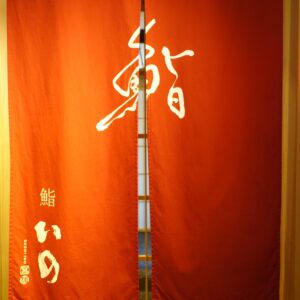
For Nigirizushi (sushi shaped by hand), I had flatfish, striped beakfish, halfbeak, bigfin reef squid, horse mackerel, tilefish, lean tuna pickled in soy sauce , dotted gizzard shad, Japanese tiger prawn, and conger eel.










“Sushi Ino” is a sushi restaurant that I visited in 2020 and was very impressed. This time too, everything was excellent and I had a blissful time. “Sushi Ino” is a well-known restaurant that has been awarded one Michelin star. It is also one of the 100 famous tabelog restaurants.
After enjoying delicious sushi at “Sushi Ino”, I drank craft beer at “OKAIDO BREWERY”. I couldn’t go sightseeing in the afternoon due to rain, so when I was looking for a craft beer, I found “OKAIDO BREWERY”.
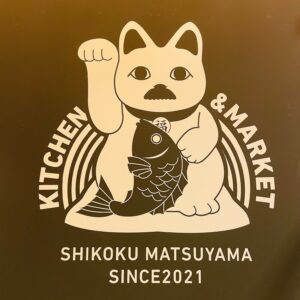
“OKAIDO BREWERY” is a craft beer shop located in “Bochan Food Hall” of Matsuyama Mitsukoshi Department Store. “Bochan Food Hall” is a new food court that just opened in December 2021. “OKAIDO BREWERY” mainly offers beer, but the same food court “Ichinomaru Sake store” offers a lot of sake, mainly from Ehime prefecture. Therefore, we can enjoy various alcohols at the food court even in the daytime.
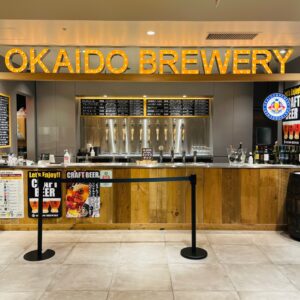
“OKAIDO BREWERY” sells “Bochan Food Hall” limited beer “Dandan Ale”. They also offer the “Dogo Beer” alto produced by Mizuguchi Sake Brewery in Matsuyama City. Both “Dandan Ale” and “Dogo Beer” were very delicious beers.
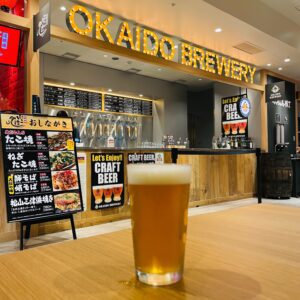
I had an early dinner at “Sushimaru Main Store” in the Okaido area. “Sushimaru Main Store” is a long-established sushi restaurant founded in 1948. Like “Sushi Ino”, I have revisited “Sushimaru Main Store” since 2020.
I ordered “local sake drink comparison set” and “Tai-somen”.
There were three types of sake in the “local sake drink comparison set”: “Ishizuchi”, “Matsuyama Mitsui”, and “Shirokawago” from Ehime prefecture. All were delicious sake.
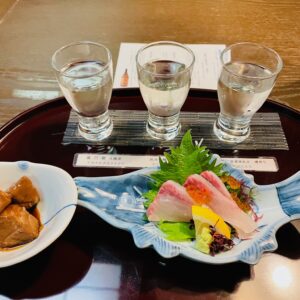
I also ate “Tai-somen” in Uwajima. It was a cold day when it rained, so I ordered warm “Tai-somen” in Matsuyama. “Tai-somen” is a local dish of Ehime prefecture introduced in “Our Regional Cuisines” by the Ministry of Agriculture, Forestry and Fisheries. The “Tai-somen” that I ate at “Sushimaru” was delicious, but it lacked the gorgeous appearance.

After arriving at Matsuyama Airport, I had some time left, so I had the last meal of my trip to Kochi and Ehime at Kadoya Matsuyama Airport. I use “Kadoya” at Matsuyama Airport every time I come to Matsuyama Airport.
I ordered “Uwajima Tsukushi Tai-meshi Zen” (Yen 2,100 including tax) at “Kadoya”. “Uwajima Tsukushi Tai-meshi Zen” is a set which you can enjoy Uwajima’s local cuisine with three types of small plates, “Fukumen”, “Jakoten”, and “Fuka no Yuzarashi”, in addition to “Tai-meshi”.
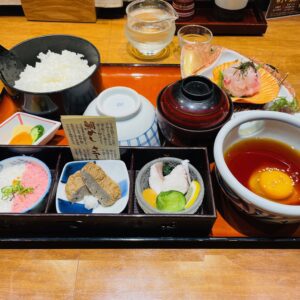
“Tai-meshi” of “Kadoya” was very delicious like the two “Tai-meshi” I ate in Uwajima. Only Matsuyama Airport can offer this high standard meal at the airport. In fact, the Kadoya Matsuyama Airport store was almost full and crowded with many tourists.
It was a pity that it rained on the last day of this trip to Kochi and Ehime prefectures. However, it was a very satisfying gourmet trip with seasonal bonitoes from Kochi and Ehime, natural eels from the Shimanto River, many local dishes from Uwajima and Matsuyama, and sushi and sashimi. Originally I liked traveling to Shikoku, but this trip made me more and more fond of Shikoku.
Important Points
I didn’t have any problems on the 4th day.
Note: The departure / arrival times, fares of transportation, admission fees, meal fees, etc. listed in the text are as of the time of writing the BLOG. Please check for yourself when you go on a trip as it may change in the future.